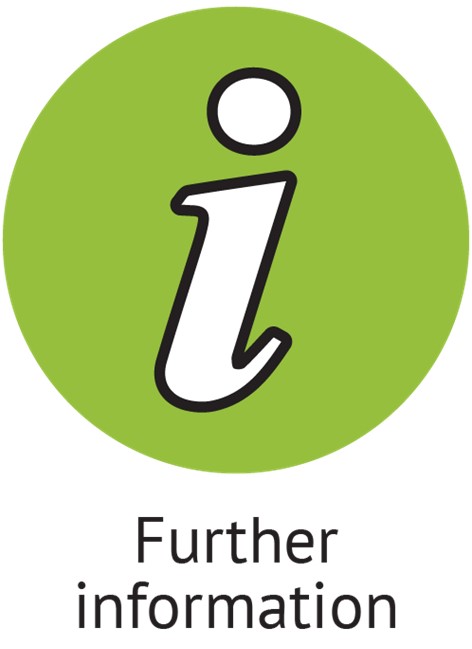Module 7 - The Research Question
The Research Question
Time to start thinking about your research question!
You probably have a topic in mind and a research question you are trying to develop and answer, but how do you turn that into an effective search query to use in databases?
Learning outcomes
Upon completion of this module, you will be able to:
- Work through the steps to formulate a research question
- Analyse your research question using a five step approach
- Construct a list of keywords associated with your research question
- Experiment with the use of Boolean Operators to refine search queries relating to your research question
- Implement a system to track database searches

7.1 Formulating your research question
Some of this content has been adapted from Griffith University.
Start the process by:
- considering a broad topic of research interest and then write it down
- considering specific areas you wish to examine within this topic
- considering key themes and elements of these specific topics to investigate in depth
- considering how to work these key areas and elements into your research question
Bear in mind that your supervisors will be looking for the following elements in your research question proposal:
- What new knowledge will be generated for the discipline?
- Why is it valuable?
- How can the reader be assured the conclusions will be valid?
- How will you present your findings?
Next, you should do a preliminary search of the literature to establish what research is already available on your topic and whether there is any gap in the research where your research can fit. This will also help you to refine your topic.
You can read more on the steps in the process of formulating your research question here:
- Churchill, H. & Sanders, T. (2007). Getting your PhD. SAGE Research Methods. https://ezproxy.une.edu.au/login?url=https://dx.doi.org/10.4135/9781849209229 (You can find this in the University Library. Download the chapter on "Formulating a research question")
- Monash University has a useful information on developing research questions

7.2 Analysing your research question
A research question is not the same as a thesis title, research problem, hypothesis, or research focus. The research questions summarises the significant issue your research will investigate in a clear, focused way.
For the rest of this module, we will use the below research question, as an example of how to develop keywords and form a search query.
What effect does caffeine have on the sleep patterns of adolescents?
How do we start analysing this research question? UNE's Academic Skills Office have a great five step approach outlining how to analyse a research question. They recommend you-
- Read the whole question twice
- Look for topic words
- Look for restricting words
- Look for instruction words
- Rewrite the question in your own words
For more information on this , and a further breakdown of the above five steps, go to the ASO resource on question analysis.
7.3 Developing key words
Some of this content on key words and Boolean Operators has been adapted from Monash University
It is useful to analyse your keywords and create synonyms (words or phrases that mean the same thing). Not all research is catalogued the same way and terminology may change depending on the research discipline, database, geographic location of the research, and the individual researcher.
Using synonyms will open your search results to broader resources as well as allowing you to be more specific.
Table 7.3 Consider the example topic, key concepts, key words and synonyms/antonyms (remember, antonyms are words or phrases that are opposite to your keyword).
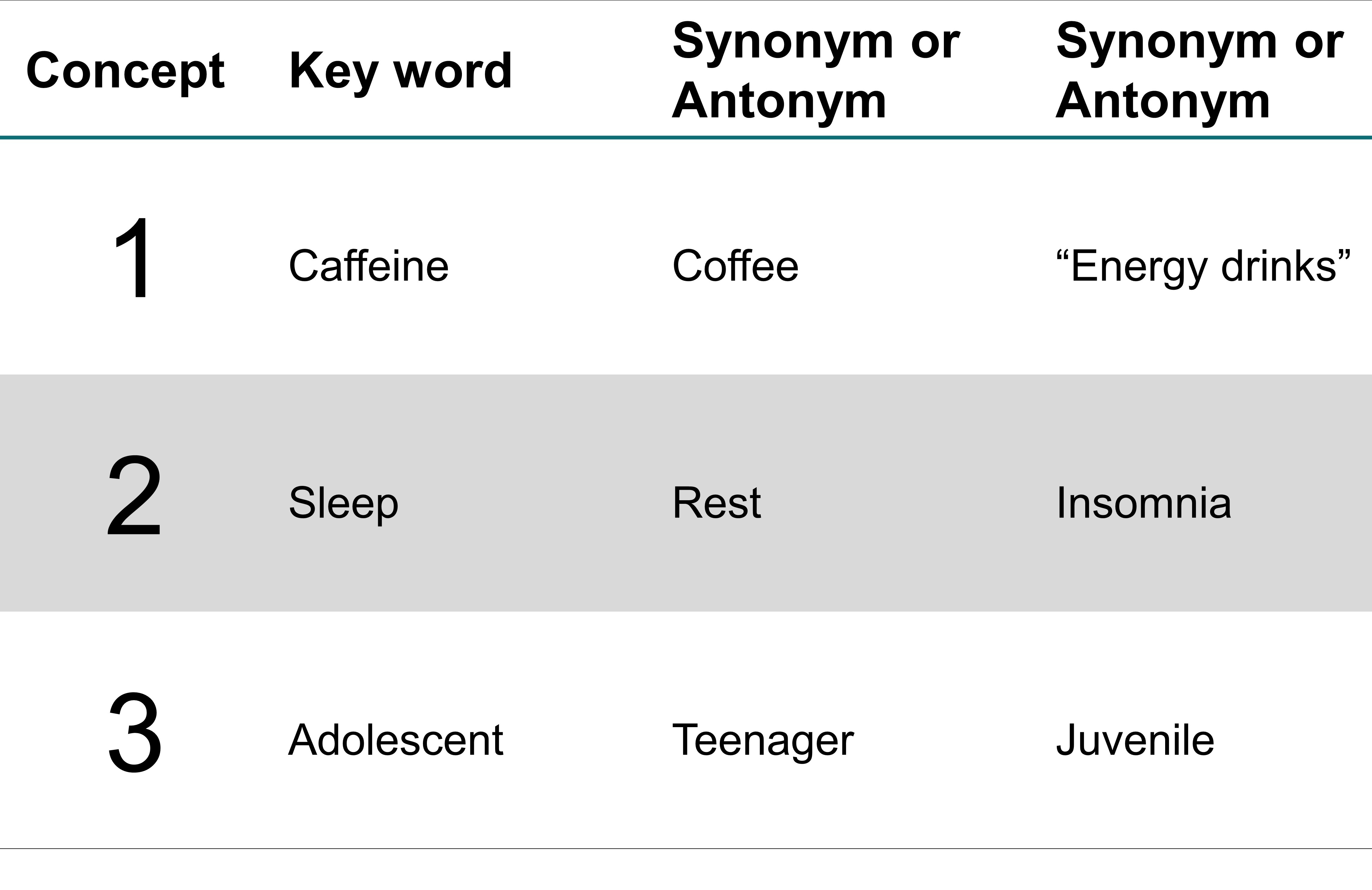
7.4 Boolean Operators
There are four main Boolean Operators than can be used to create a more accurate search query:
- AND
- OR
- NOT
- truncation
AND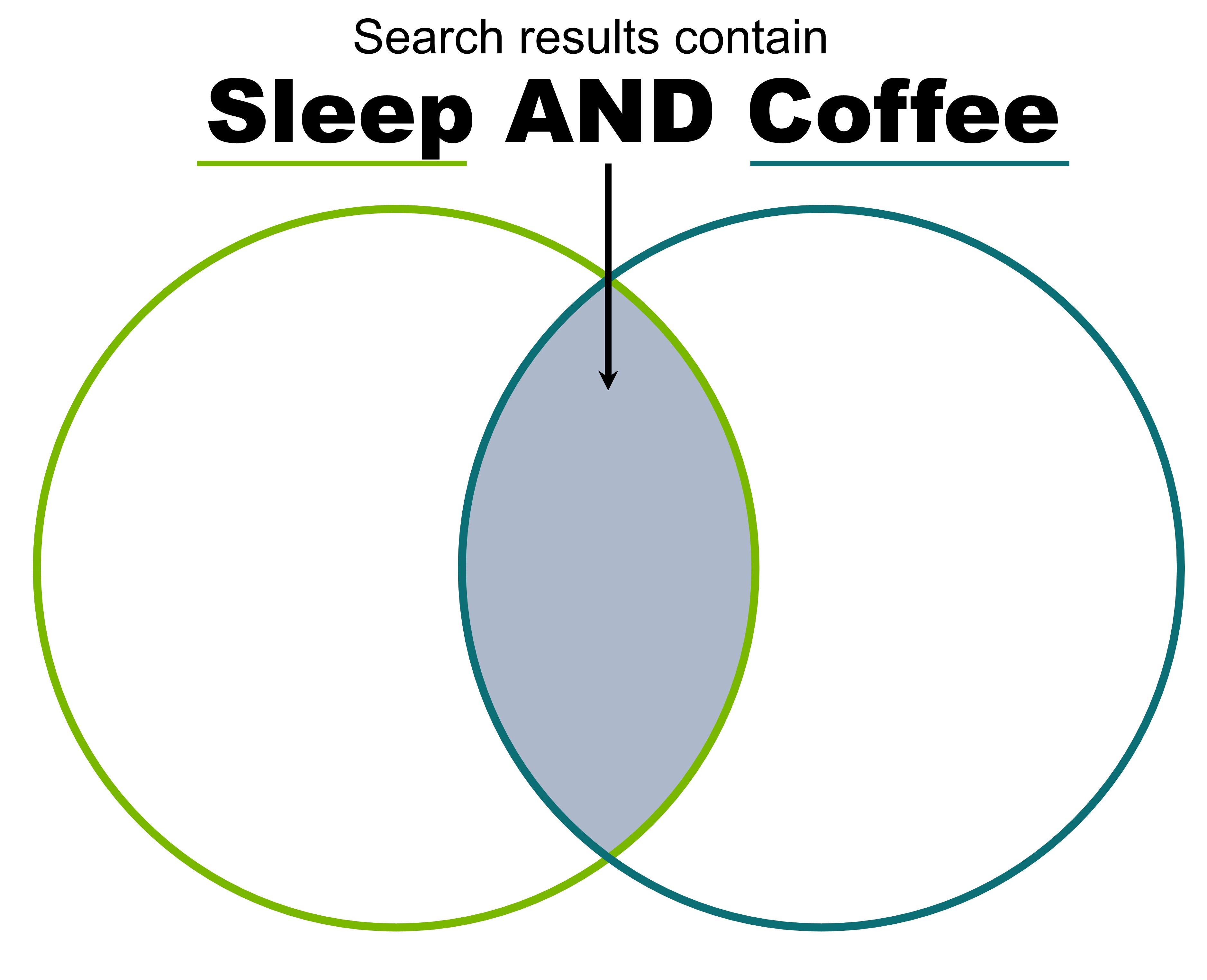
AND is the most commonly used Boolean Operator as it connects keywords and themes together ensuring the results returned are the most relevant to the search.
Example- ("sleep" AND "coffee") will bring back results containing the words sleep and coffee in the same resource. It will not bring back resources that just mention sleep or just mention coffee.
OR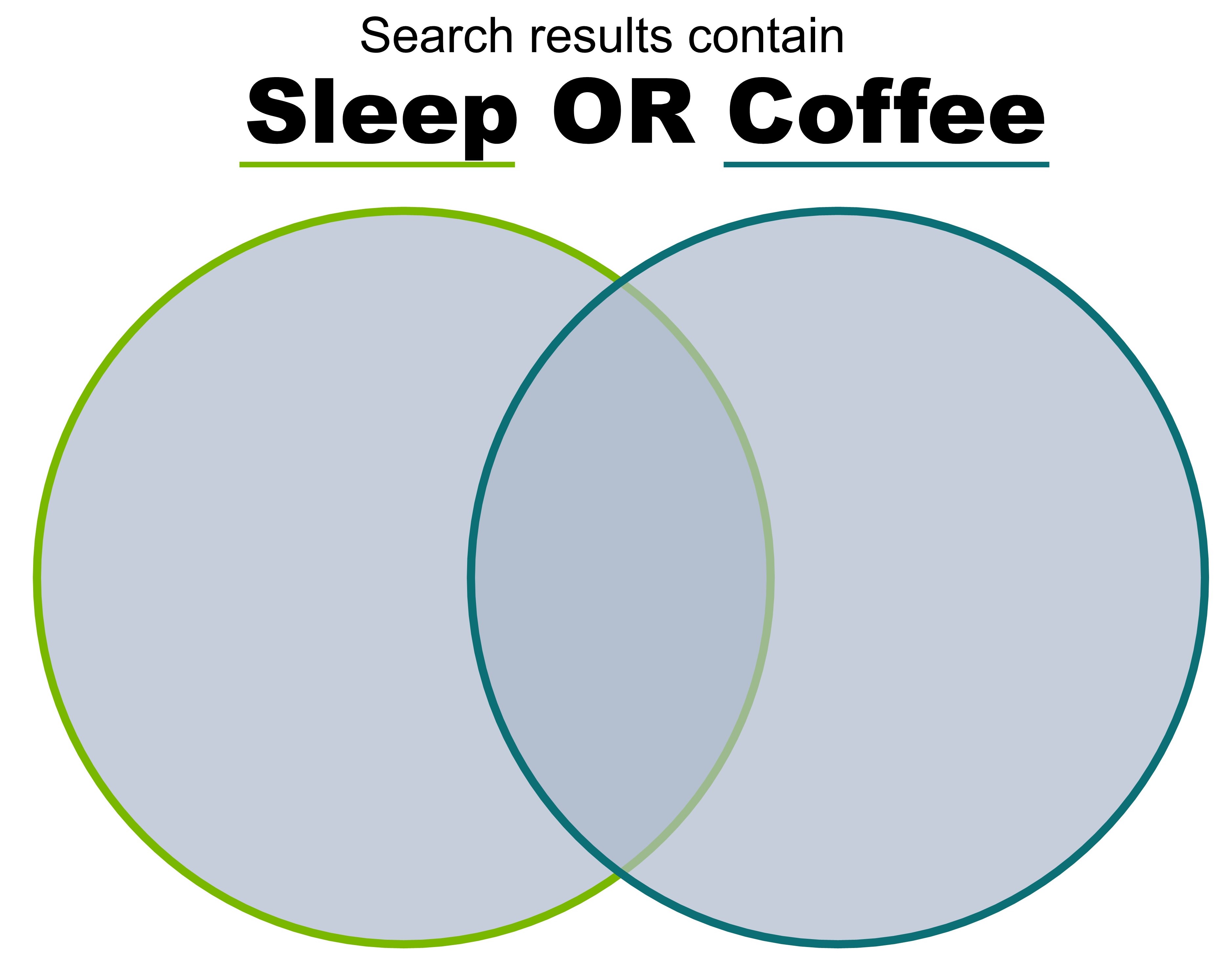
Put simply, OR = more. This widens your search and is great for using synonyms, like in the key words we developed above
Example- ("sleep" OR "insomnia") will bring back results containing the words sleep or insomnia regardless as to whether the two concepts are related
A way to use these search strategies together would be-
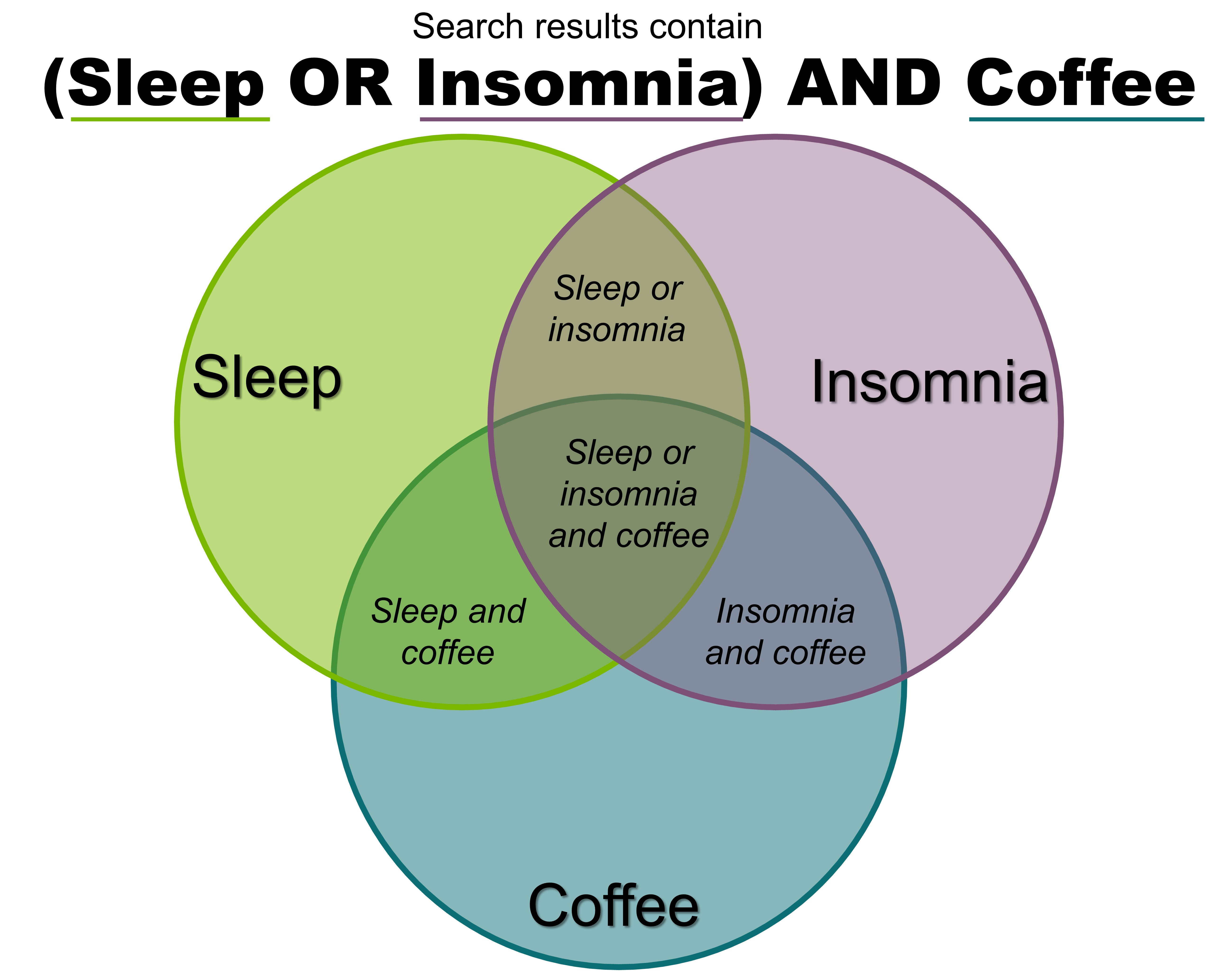
NOT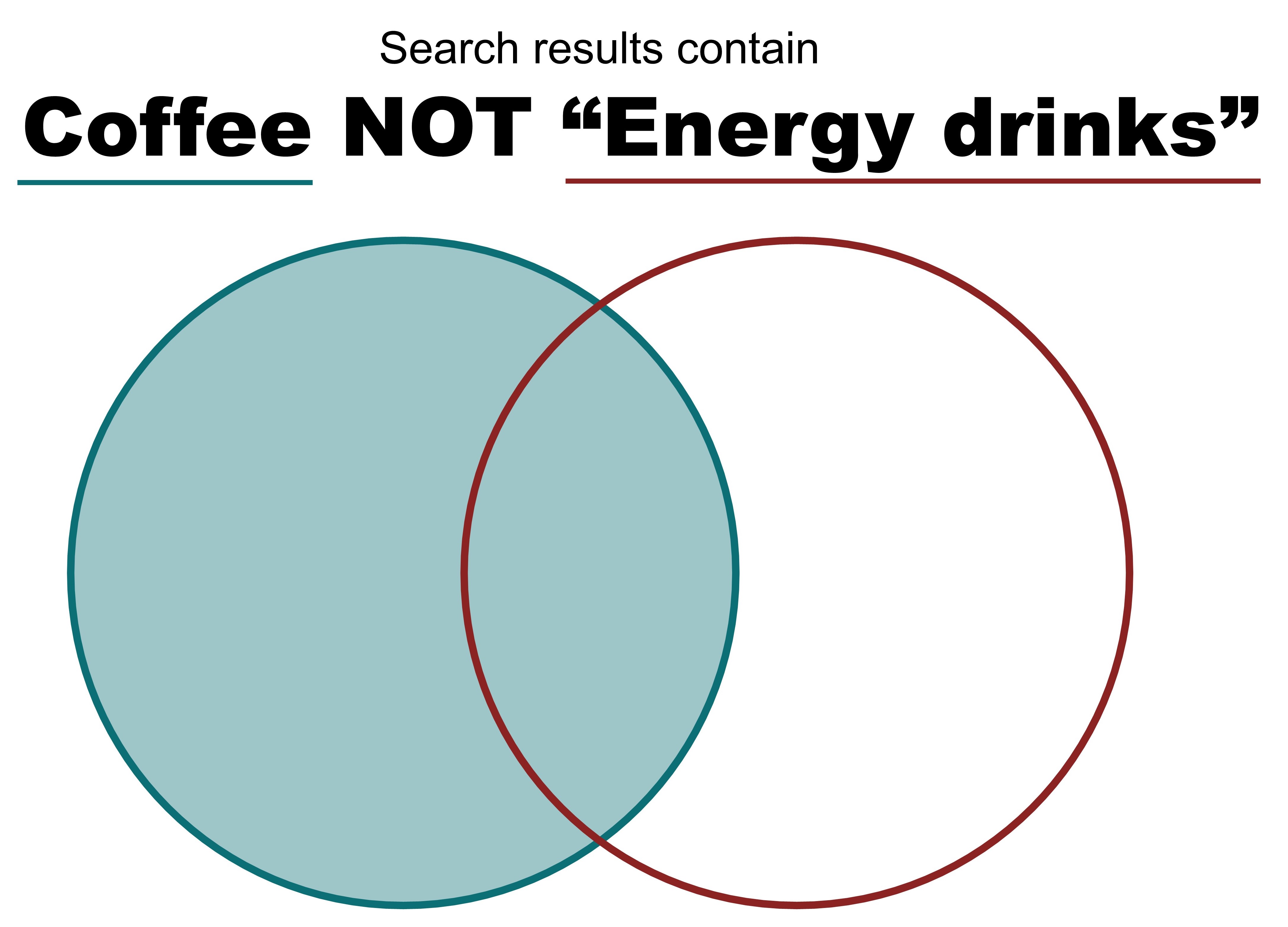
NOT is a useful term to use when the results keep bringing back resources that include too many other things.
Example- ("coffee" NOT "energy drinks") will bring back results containing information on coffee but not resources containing information on energy drinks
Truncation
Truncation is used when you have a root word (a root word has no prefix or suffix — it's the most basic part of a word) and would like to search multiple endings at once. This helps save time and created more effective searching. For most databases the command for truncation is an asterisks (*)
Example- ("teen*") will bring back resources on teen, teenager, teenagers...
7.5 Form a Search Query
Now that we've discussed keywords and Boolean Operators it's time to form a search query.
Consider the following search:
("caff*") AND ("sleep") AND ("adolescent" OR "teen*")
Draw a Venn diagram to demonstrate the types of search results that would be generated.

7.6 Keeping a track of your database searches
As you've probably realised keeping track of all the searches you are running across multiple databases can be quite a task. Keeping a record of the following can help:
- What day did you search?
- What database did you search?
- What search query did you run?
- What limiters did you apply?
- What were your results?
Another element to consider is categorising your literature. These sources can be categorised in a number of different ways, depending on your preferences. Here are some examples to get you started:
- Research Themes
- Major findings
- Theoretical approaches adopted by the authors
- Qualitative or Quantitative
- General to specific concepts
- Settings or study areas
- Evidence, evidence type
- Different types of experiments
An easy way to keep track of all this information is via a spreadsheet.
Download this template and get started with tracking your database searches and the results you get. Don't forget to look at the 'Read me' tab in the spreadsheet, which explains the purpose behind each column headings etc.
Griffith University has a great resource on categorising literature. Check out their webpage on quantitative reviews and download some example spreadsheets. The Thesis Whisperer also has a great post on literature reviews you can read.

In Module 8 Deciding Where To Search we will cover where to search - there are a lot more options than you may believe!
Progress to Module 8 - Deciding Where to Search
Feedback
In order to improve this resource, please email us if you have any questions, comments, or feedback to SOL:AR

